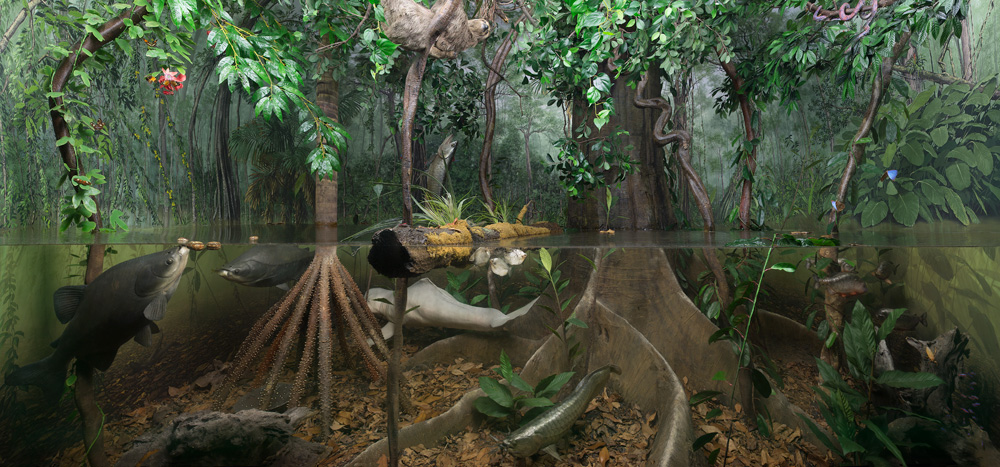Amazonian rainforest

Water flows slowly and constantly, infusing tranquillity; the air is warm and moist. During rainy season (from January to the end of March), rainfall swell the river until it flood. Water of Amazon River flood the Forest; consequently, animals are forced to move to new places. Vegetation is luxuriant and the light that reaches low stratums is lacking because upper stratums absorb it.
Amazon River – in South America – begins in Peruvian Andes, near Pacific Ocean. It starts its road more than 4500 meters high, road that goes from mountains to valley, covering 6300 kilometres (about six times Italy) before arriving to Atlantic Ocean. Amazon River is the longest river in the world and has a wider basin than the one of Nile.
The area where Amazon River flows is plain; water flows slowly through a whole continent. This weak slope causes the flood of the River that reaches huge extensions. It seems that at some point the River “doesn’t know where to go”. Periodically, after rains, water leaks out from the bed of the river and reaches the Forest; later, water comes slowly back to its layer. This succession of overflows and retreat of water, lead French ecologist Jean Dorst to affirm that hydrographic system of Amazon River “beats as a heart”.
These periodical overflows influence the biology of each living organism of these places.